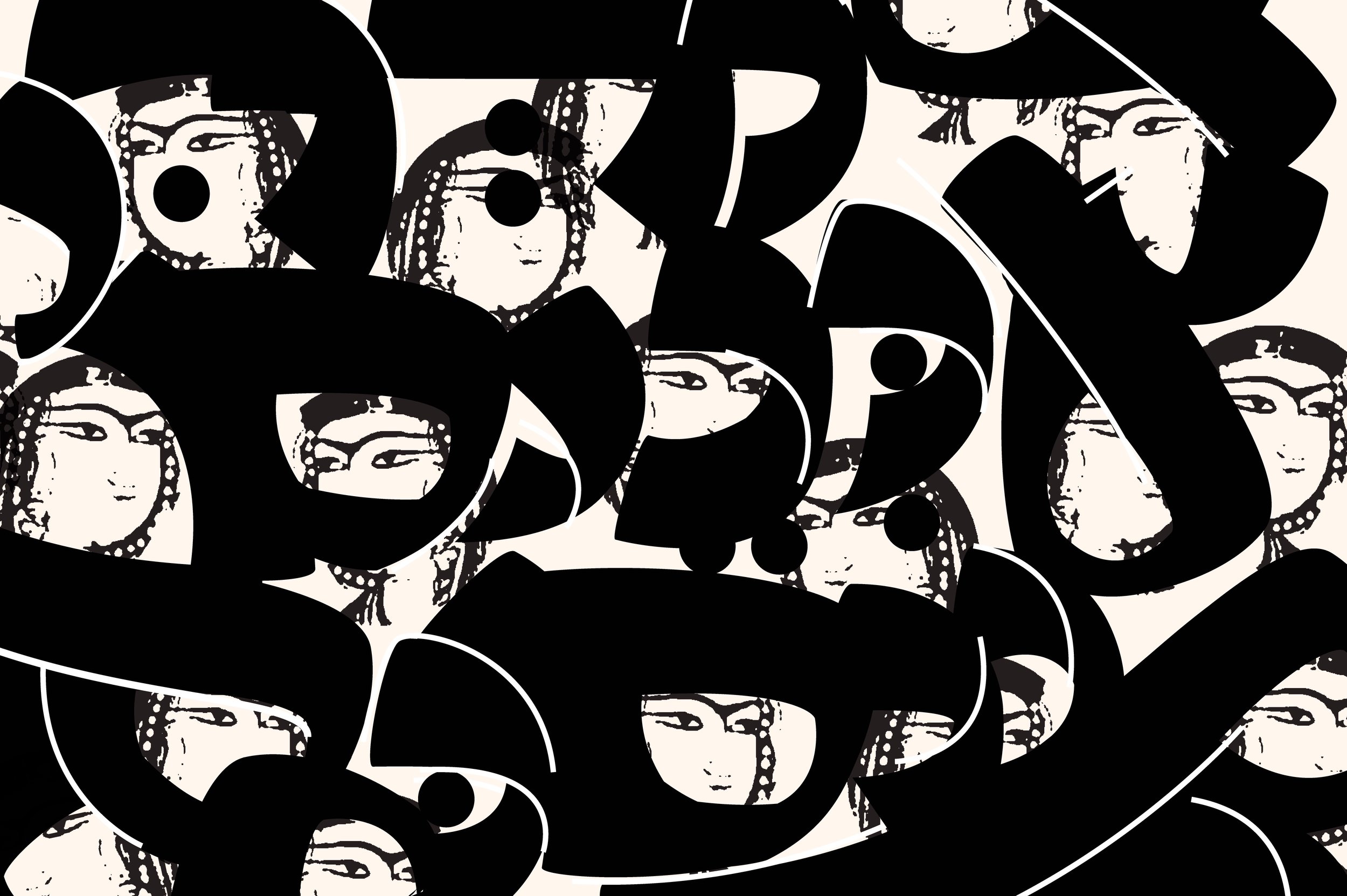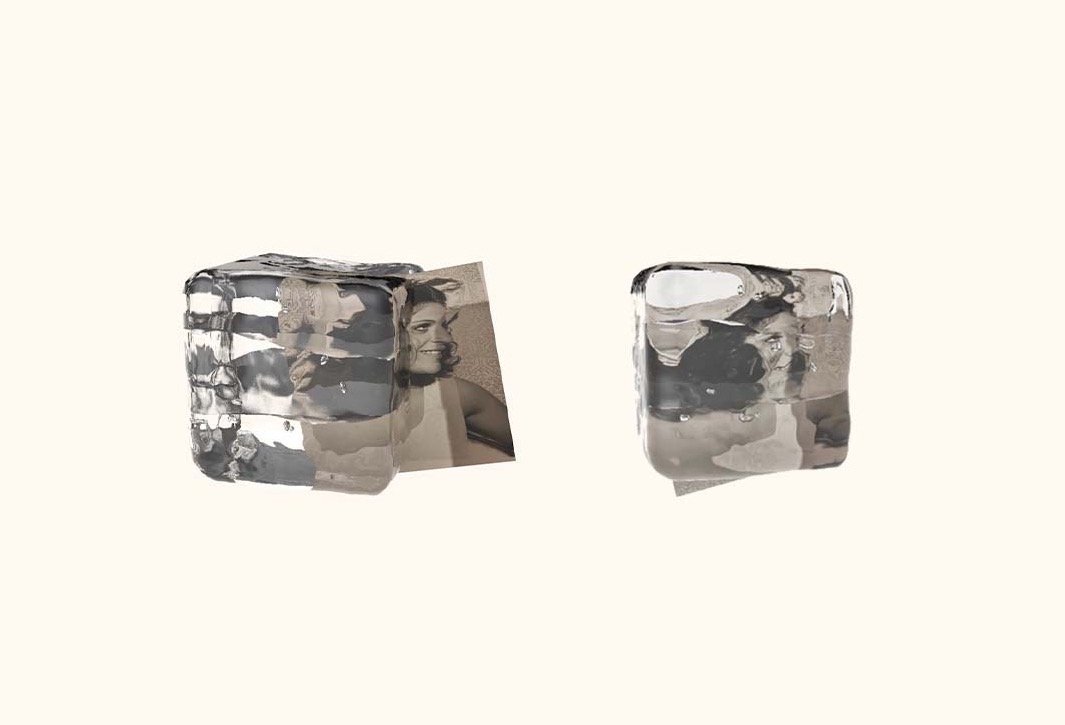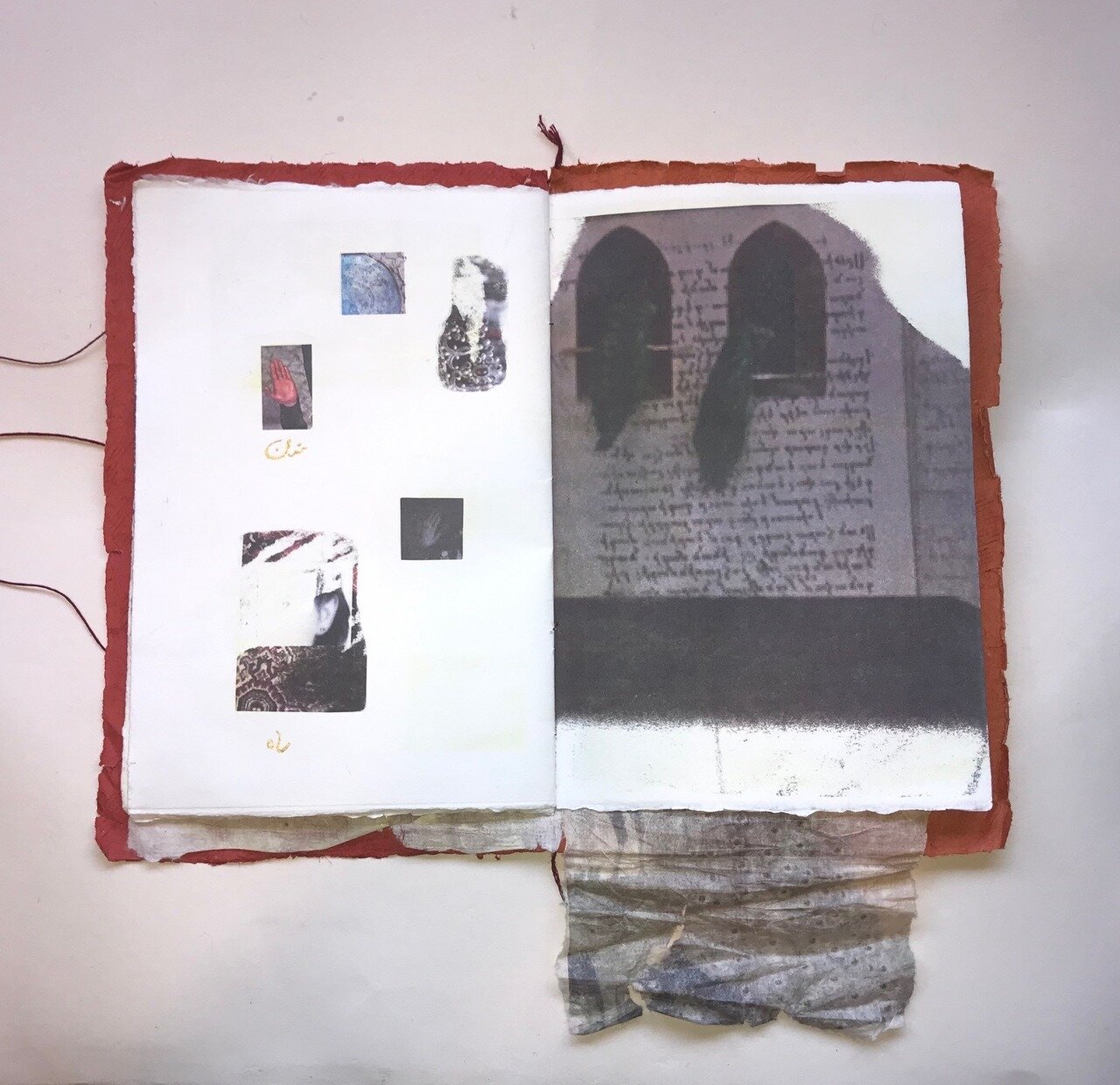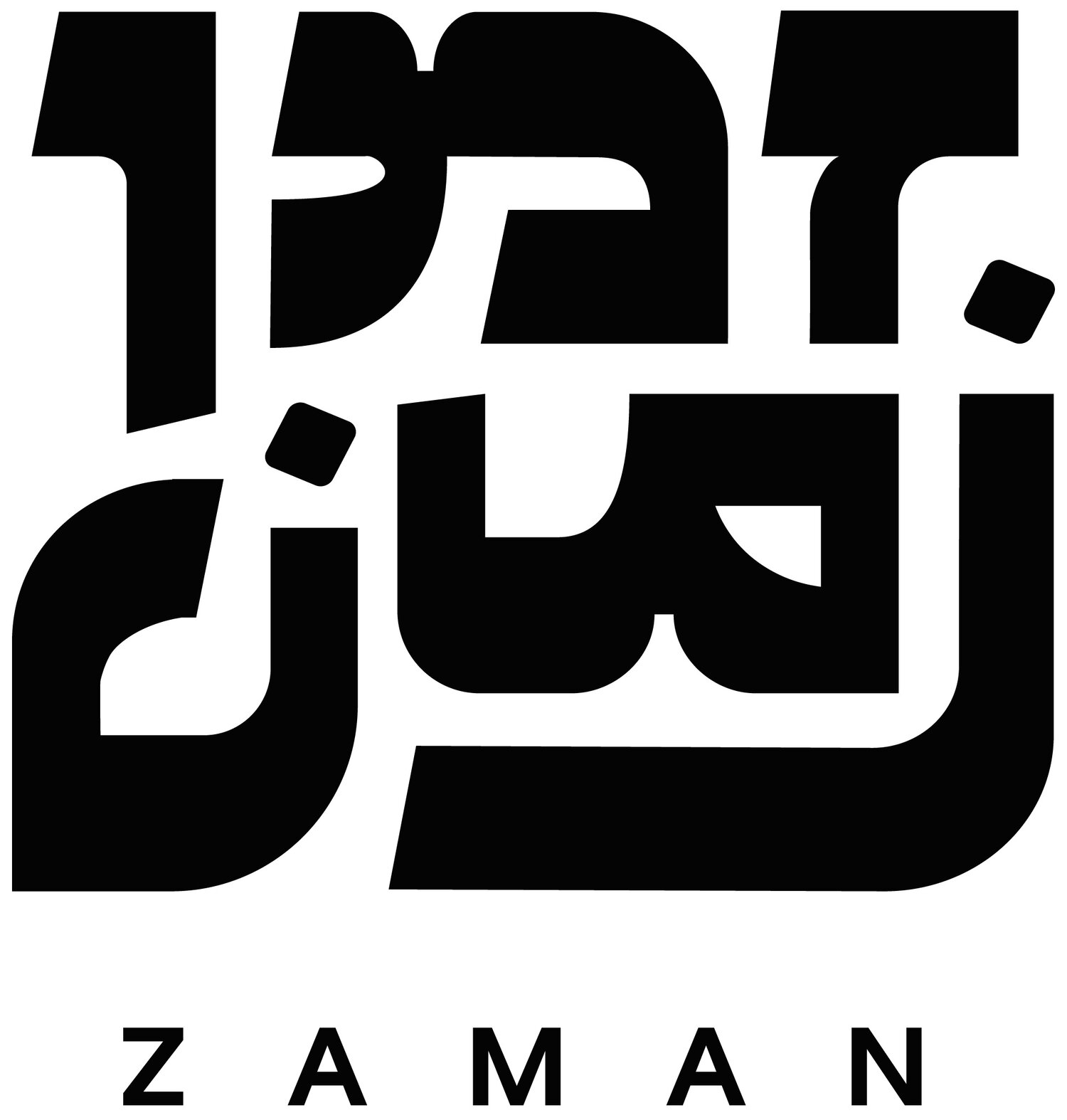
Beyond the Line
In Shany Dvora’s graphic works, dark eyes and placid faces peer out from behind languid, spliced calligraphic forms. They exude a sense of determination to continue to see and be seen, to continue to speak and be spoken.

Rendered in Ice
Banafsheha digitally manipulates a series of photos sent to her by her grandmother, toying with physical and impalpable notions of preservation in a tenderly awkward fight against time.

Weaving Futures: A Conversation with Mika Benesh
ZAMAN Co-Editor Sophie Levy speaks with Mika about the title of their Judaica project, its connection to the concept of "Jewish temporality," practicing Jewish ritual as a trans person, and the value of participatory, inviting design.

Babylon of the Tropics
This series of artworks was influenced by my family’s history, which unfolds between the Ottoman Empire, the Spanish Empire, and the Republic of Brazil. My mother’s side of the family settled in Brazil after fleeing the Spanish Inquisition as marranos – Sephardim who moved through public society as Christians, yet secretly practiced Judaism in the privacy of their homes. My father’s side of the family came from Ottoman Syria in the wake of the Assyrian Genocide, and from Egypt after WWI.

Houndstooth
A series of embroidery works depicting bodies, some whole and some fragmented. They are surrounded by a hand-woven pattern, recalling the shapes, colors and processes of traditionally woven textiles in a small, intimate format. The bodies are androgynous, comfortably and vulnerably in a state of in-between-ness, inviting a gaze to view them as they are.

Writing Between Tongues: The Calligraphy of Ruben Shimonov
Ruben Shimonov’s hybrid identity as a Bukharian, Sephardic, and Mizrahi Jew continuously informs his work as a community builder, educator, and artist.

Hamdam / همدم
Hamdam, meaning “of the same breath.” The triptych of screenprints pays tribute to a deep sisterhood. Two figures stand side by side in black gowns, twin expressions on their faces. Their overlapping hands are linked and joined as if belonging to only one person. Likewise, the figures’ heads and bodies merge as one, reflecting the depth of their bond. In the center panel, a rose makes reference to the Persian funerary rites of dousing graves in rosewater.

Self-Portrait
Set against the backdrop of his college dorm room, the painting examines the gaps that exist between how he perceives himself and how others perceive him, illuminating how one’s heritage can simultaneously serve as a catalyst for self-understanding and external misinterpretation.

Iranian Fantazy
Gilad Bar’s fantastical conception of Tehran, constructed through fictional mid-century artifacts, souvenirs, and everyday items like cigarettes and legal tender- presented as if they were seen or collected on a vacation that cannot occur in reality.

Tavoos / طاووس
Tavoos is a collection of fragments. A sentimental relic of cultural images, both real and imagined, both in America and in Iran. Nostalgia for a place that I have never seen, yet know and remember deeply. Family photos, film stills, and symbolic imagery, hand transferred using a printing press, layered with Farsi phrases that endure in my memory, sewn together with silk thread.
